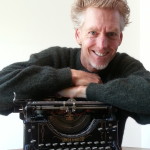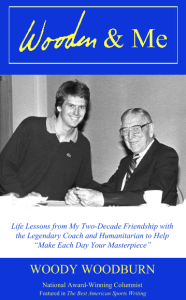 FOLLOW ME ON INSTAGRAM: @woodywoodburn
FOLLOW ME ON INSTAGRAM: @woodywoodburn
*
Pencils, Pens and
Rocket Science
In an interview discussing her novel “Song of Solomon,” Toni Morrison spent upwards of fifteen minutes discussing the opening paragraph. This was remarkable for it consists of a mere 43 words total:
“The North Carolina Mutual Life Insurance agent promised to fly from Mercy to the other side of Lake Superior at three o’clock. Two days before the event was to take place he tacked a note on the door of his little yellow house.”
The two sentences seem simple enough, yet in the hands of the late Pulitzer Prize-winner the writing pen is on the order of rocket science. For example, “North” in the insurance company’s name was a metaphor for the Underground Railroad and slaves fleeing in that direction. The choice of “Mercy” for the town was more evident, but to learn the deeper meanings behind “fly” and “three o’clock” and “little yellow house” was to hear a SpaceX engineer discussing avionics.
I know this because I recently visited with the Lead Build Reliability Engineer for Avionics at SpaceX. Technically, Cullen McAlpine and his team are in charge of making sure the electromechanical assemblies, wire harnesses, batteries, sensors, solar arrays and more all perform as designed.

SpaceX’s Crew Dragon astronauts …
In other words, when the Crew Dragon spacecraft lifts off from NASA’s Kennedy Space Center in Florida (launch time is targeted for 7:49 p.m. ET, Saturday, Nov. 14) to carry four astronauts to the International Space Station, Cullen will be a key author in the sci-fi story that is now almost routine.
Cullen, a 2011 graduate of Ventura High School who earned a degree in Aerospace, Aeronautical and Astronautical Engineering at UCLA, is a dear family friend of mine. As a kid who grew up during America’s Space Race with Russia in the sixties, I love asking Cullen questions about his work.
I won’t share everything that he told me the other day because you’d have to be a rocket scientist to understand much of it. More truthfully, I mostly have no idea what he was talking about so how can I retell it?
At one point, trying to give the impression I wasn’t a complete doofus, I mentioned how I found it amazing NASA spent a million dollars to develop a pen that could write in the gravity-free vacuum of space whereas Soviet cosmonauts simply used a two-cent pencil.
Cullen smiled at me like a wise professor and then gently educated his ignorant student. With the depth of Toni Morrison discussing writing, he explained that using a pencil in space could be penny-wise and mission-foolish. The tip of graphite breaking off could pose danger to equipment inside a weightless capsule. Even a tiny fleck of graphite could float perilously into an astronaut’s eye.
Cullen told me much more, but most of it sounded like a foreign language. As if in a Paris restaurant, I just nodded a lot.
Doing some homework for the next time I see Cullen, I discovered that early on NASA astronauts did indeed use pencils – mechanical ones costing $128 each. The Fisher Pen Company eventually stepped in and invested $1 million to create a pen that can write upside-down; in blazing temperatures (250 degrees Fahrenheit) and frigid conditions (minus 30 degrees); even underwater.
Featuring a pressurized nitrogen cartridge and gel-like ink, the “Space Pen” was patented in 1966 and first used by Apollo 7 astronauts during their 1968 mission. Soviet cosmonauts followed suit a year later.
Inspired by Cullen, I bought an authentic million-dollar “Space Pen” for 22 bucks. I’m no rocket scientist but believe me, it’s far better – and way cooler – than a pencil.
* * *
Woody Woodburn writes a weekly column for The Ventura County Star and can be contacted at WoodyWriter@gmail.com. Follow him on Twitter and Instagram at @woodywoodburn. His books are available at www.WoodyWoodburn.com.

 Check out my memoir WOODEN & ME: Life Lessons from My Two-Decade Friendship with the Legendary Coach and Humanitarian to Help “Make Each Day Your Masterpiece” and my essay collection “Strawberries in Wintertime: Essays on Life, Love, and Laughter” …
Check out my memoir WOODEN & ME: Life Lessons from My Two-Decade Friendship with the Legendary Coach and Humanitarian to Help “Make Each Day Your Masterpiece” and my essay collection “Strawberries in Wintertime: Essays on Life, Love, and Laughter” …
- Personalized signed copies are at WoodyWoodburn.com

